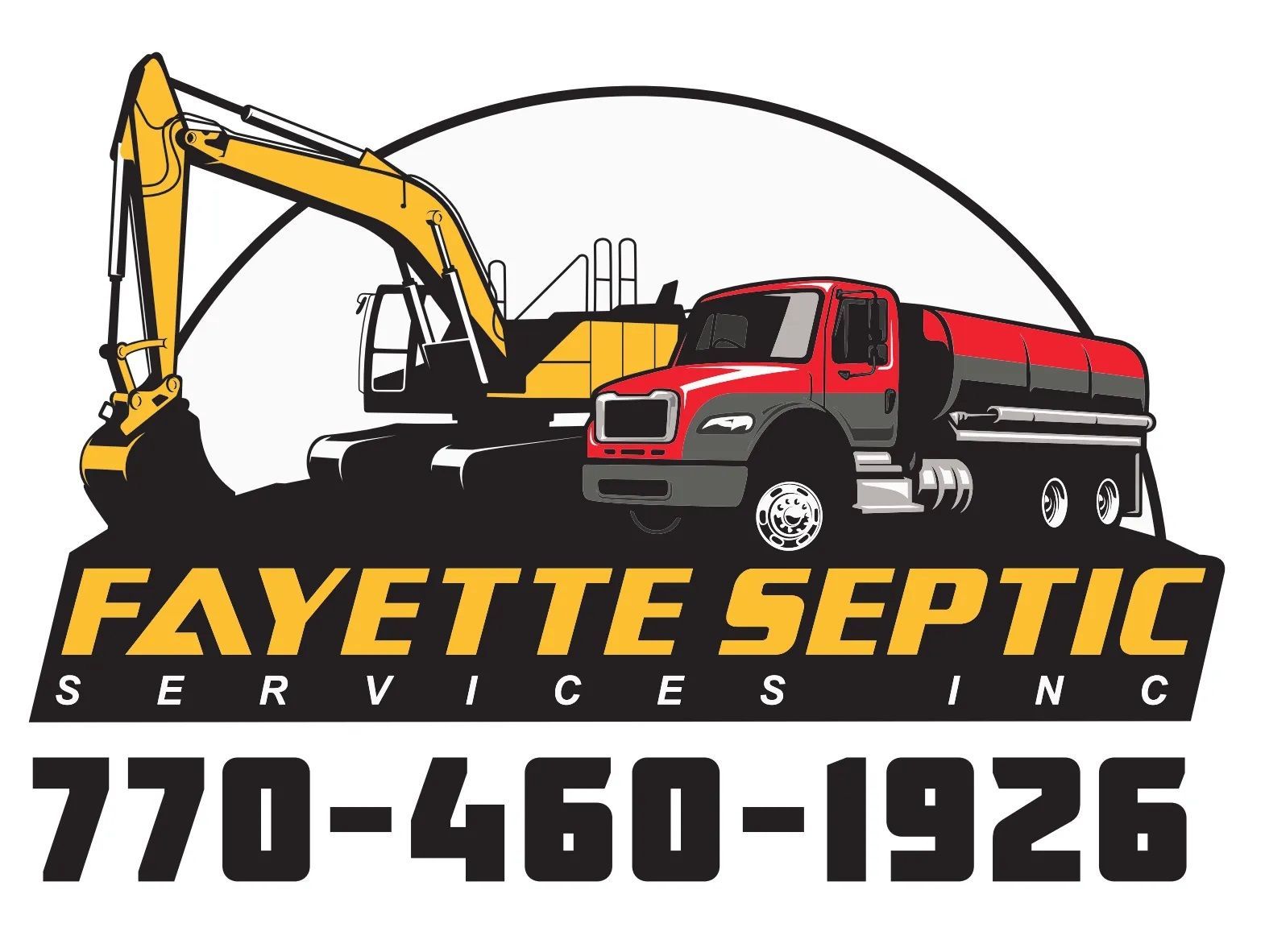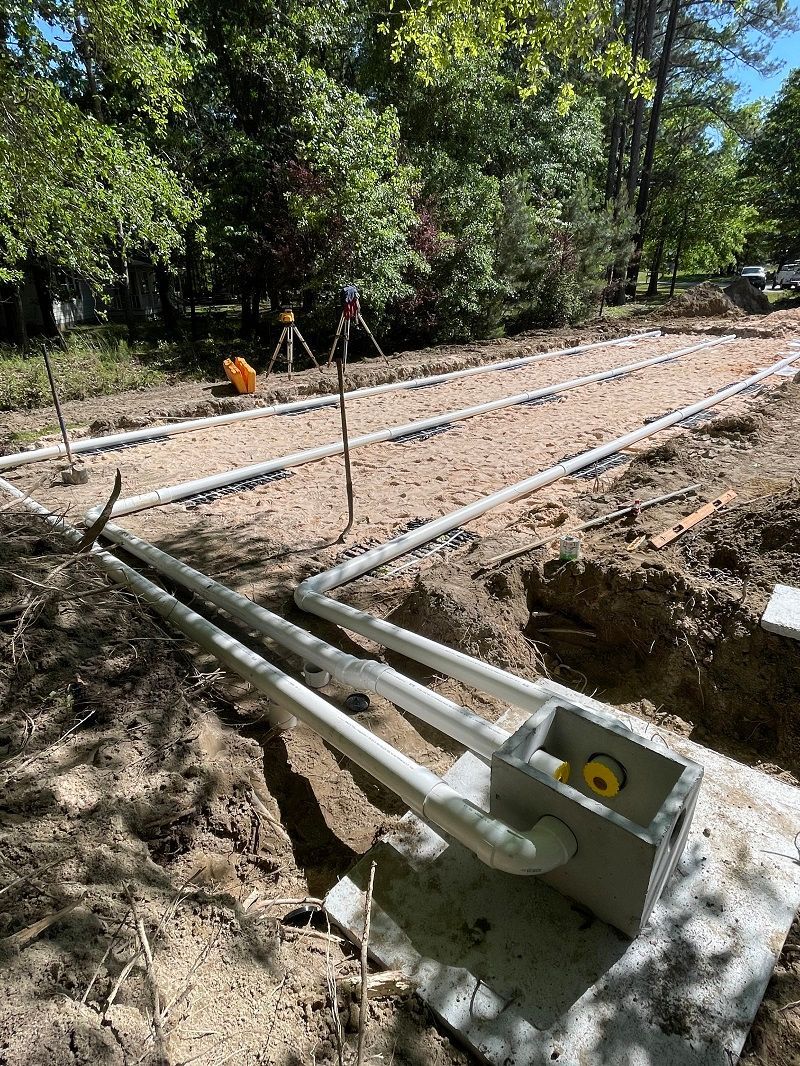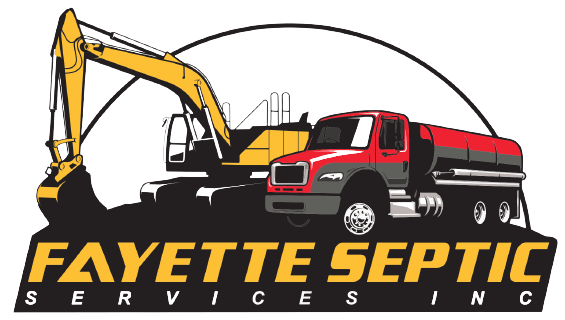Septic Tank Resource and Knowledge Center
There are many components and phrases used in the septic system industry. We break them down for you!
Septic System Words and Phrases To Know:
Scum:
Scum refers to substances lighter than water (oil, grease, fats) float to the top, where they form a scum layer that floats on top of the water surface in a septic tank.
Sludge:
Sludge refers to the “sinkable” solids (soil, grit, unconsumed food particles) settle to the bottom of the tank and form a sludge layer. The sludge is denser than water, so it forms along the tank bottom.
Effluent:
Effluent refers to the clarified wastewater left over after the scum has floated to the top and sludge has settled to the bottom. It is the clarified liquid between the scum and sludge. It flows through the tank outlet into the absorption area.
Absorption Area:
Absorption area refers to a natural way of purifying wastewater when it leaves the septic tank, includes drainfields (leachfield or disposal field), mounds, seepage bed, seepage pits, cesspools.
Biological Mat (BioMat):
Biological Mat or BioMat refers to a black, jelly-like mat that forms along the bottom and sidewalls of a drainfield trench. It is composed of anaerobic microorganisms that anchor themselves to soil and rock particles and eat the organic matter in the septic tank effluent.
Aerobic:
Aerobic refers to the requirement of oxygen in order for the microorganisms to live.
Anaerobic:
Anaerobic refers to the lack or need of oxygen in order for the microorganisms to live.
Common Septic Myths
If I flush yeast, buttermilk, or commercial products into my septic system I will not have to have it pumped.
WRONG, no scientific research has been able to find that these additives are helpful to your septic system. However, it has been found that these additives will damage your septic system. The additives agitate the solids in the septic tank instead of allowing them to float to the top or settle at the bottom of the tank. This agitation suspends the solids. They are then flushed into the absorption area and clog the pipes and soil pores. This clogging of the pipes and soil pores can lead to failure of your septic system and costly replacement.
If my septic tank is failing I should flush it with large amounts of water.
WRONG, your septic tank is probably failing because of too much solids in the septic tank or a clog in the absorption area. Flushing the system will force the solids into the absorption area furthering the damage to the absorption area.
My septic system is healthy because the grass is bright green over the leach lines.
WRONG, this is a sign that the effluent is probably not flowing down into the soil the way it needs to. Also, look for marshy areas and standing effluent.

Items that should NOT be put into a septic tank:
- Raw or cooked meat
- Varnishes, paints, solvents
- Diapers
- Antifreeze or motor oil
- Paper towels or unapproved toilet tissue
- Harsh or caustic drain cleaners
- Cigarette filters and buttes
- High foaming laundry detergents
- Plastic
- Bleach
- Eggshells, bones, food scraps
- Herbicides and pesticides
- Coffee grounds
- Cat litter
- Excessive oils and grease
Septic Tank Inspections
An inspector from Fayette Septic Services will do a visual inspection of your septic tank and absorption area. To help you better prepare on what to expect for your septic tank inspection, we have put together some of the top questions that we have been asked over the years. There are the common questions and may not include your particular question. We are always happy to speak with you directly by phone. You can reach our friendly and knowledgeable team by calling 770-460-1926 and we will be happy to answer any additional questions you may have about your appointment, or assisting you in setting an appointment for your septic tank inspection.

The inspection of your septic tank will involve the following:
- Measure and make a record of the scum and sludge levels
- In most cases pump out your tank
- Check the baffles in your tank (this is to make sure solids are not exiting your tank)
- Check the tank for cracks, leaks, or infiltration
- Make an assessment of the tank’s construction and installation (this will check for any sensitivities or future problems)
The inspection of your absorption area will involve the following:
- Check for signs of system failure (such as odors, mushy spots, effluent at the surface)
- Surface water (shows poor filtration)
- Check for proper effluent distribution
- Check for potentially harmful shrubs, trees, or any other hazards in the absorption area
The inspector will write up a report about the inspection and about your septic system. This report is not a warranty it is to inform you that your septic system is in proper or improper working order at the time the inspector did the inspection.
When should I have an inspection done?
Your septic system should be inspected on a regular basis. It is recommended that the septic system be inspected every 1 to 3 years. It is always an opportune time and recommended to inspect your system when it is being cleaned out. It is highly recommended that you have the septic system inspected before you purchase a home.
Where does the wastewater go when it leaves the tank?
After the septic tank the clarified wastewater (effluent) will flow into the soil absorption system. The most common type of soil absorption area is called the drainfield or leachfield, but seepage beds are also used.
The Drainfield
The drainfield is designed to discharge the septic tank effluent below ground into the natural soil for treatment and disposal. Typically a drainfield will consist of several relatively small and shallow trenches with gravel in them. A perforated pipe will run near the top of the gravel to distribute the effluent throughout the length of the trench.
How Does the Drainfield Work?
The effluent will come out of the septic tank through the outlet pipe and will continue to run through a watertight pipe to the drainfield trenches. When it reaches the trenches it will flow through the perforated pipes in the gravel. The effluent will flow out of the perforated pipes and through the gravel and seep into the soil beneath and beside the perforated pipes. The main purification of the effluent takes place through filtration and the biological activity of microorganisms breaking down the remaining solids in the effluent as the effluent flows through the biological mat on the sidewalls and the bottom of the trench and then through unsaturated soil. The purified liquid will then eventually evaporate, be taken up by plants, or work its way into the groundwater.
Seepage Beds
A seepage bed is generally one large excavation. The bottom is covered in a layer of gravel and multiple pipes are laid on the gravel with 3-5 feet of spacing between the pipes. The pipes are covered with gravel and a protective layer of fabric, straw or untreated building paper.
Distribution
Most conventional systems use gravity to deliver the effluent from the treatment tank to and through the absorption area. Even distribution of the effluent is key in order for the system to function properly. Uneven effluent distribution leads to the over load of the absorption area and can eventually result in major problems and costs. Most in ground trench or bed systems use gravity distribution. In all trench systems and some bed systems, a distribution box is used to divide the flow equally. Some systems require that the effluent be pumped to the absorption area. This occurs when the effluent cannot use gravity to flow to the absorption area, usually because it needs to be pumped up hill.

